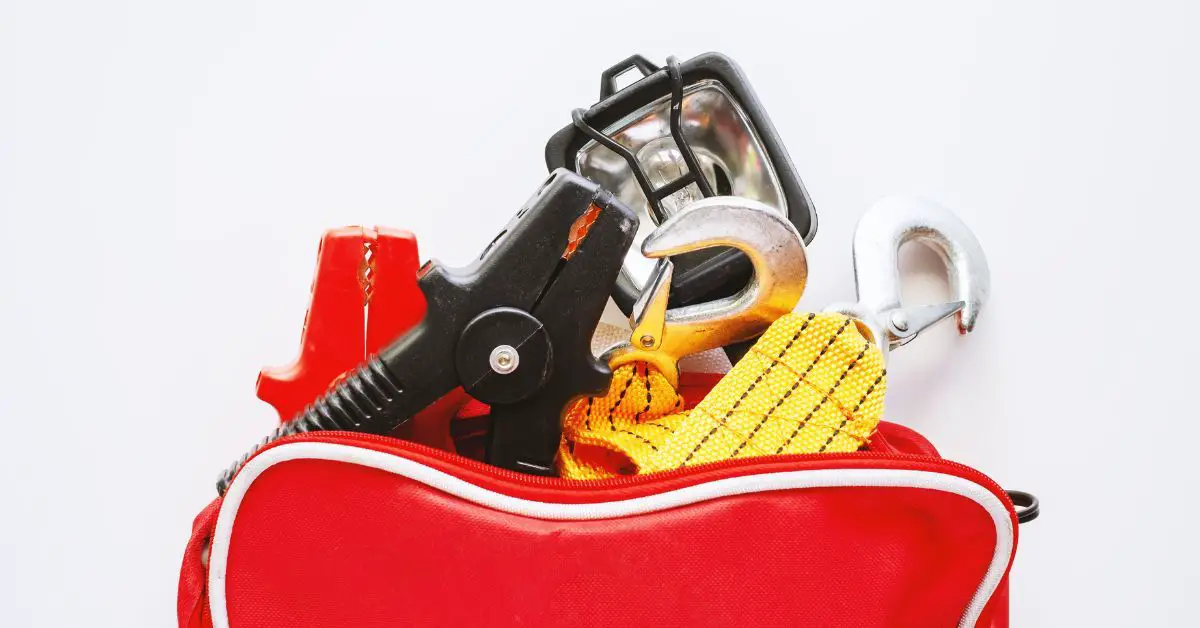What do you do if your car won’t start for no apparent reason? If your car suddenly won’t start, is there anything you can do to get it going again? Having these items in our vehicle emergency kit list in your vehicle is useful for a variety of reasons.
Because of this, you should always have a kit for emergencies in the trunk of your car. Having an emergency pack on hand is absolutely essential, especially in locations with colder climates.
Being prepared for an unplanned stop can help you save time and get back on the road faster. The things that we have put here are beneficial to everybody who reads them. Have a look at this guide, and remember to maintain these items on hand at all times.

Items to have on your Vehicle Emergency Kit List:
Maintaining a survival pack in your car is a smart idea in case of an unexpected breakdown. Items in this vehicle emergency kit list should cover emergency use cases in most situations:
- Blanket
- Bottled water
- Energy bars
- Gloves
- Boots and wool socks
- First aid kit
- Whistle
- Candles and matches
- Small shovel, scraper and snowbrush
- Duct tape
- Flares
- Small tool kit that includes screwdrivers, pliers, adjustable wrench, etc.
- Flashlight
- Pen and paper
- Shovel
- Snow brush and scraper
- Tire gauge
- Jumper cables
- Battery-powered jump starter
- Spare tire and jack
- Tire inflator and sealer
- Antifreeze
- windshield washer fluid
- Two quarts of oil
This vehicle emergency kit list could save your life in Colder Climate
In the winter, driving can be hazardous due to icy roads, poor visibility, and extreme cold. There’s a higher chance of getting stranded in your car during the winter, so make sure you’re wearing warm clothes.

Always Prepare Before You Drive in the Snow
If you have to go somewhere in the snow, tell someone where you’re going and when you expect to return. Before setting out on the road, check that the tires have the appropriate amount of air in them. It’s a good idea to have a mechanic inspect the following vehicle systems in addition to monitoring the weather.
Do not get behind the wheel if you are sick with the flu; doing so can slow your reaction time approximately six times as much as drinking moderately. The possibility of a gas line freezing due to low gas levels can be mitigated by keeping the tank at or above half full.
If you become stuck in the snow. Avoid the temptation to try to free your car from a snowdrift by pushing it. Flares should be lit in front of and behind the vehicle, and the exhaust should be clear of any debris such as snow or mud.

What You Do Next is Important When Stuck in the Snow
In the event that you find yourself stranded in the snow, our vehicle emergency kit list will come in very handy. Consider the following:
Keep your cool and stay inside where it’s warm. Be careful not to overwork yourself. It’s dangerous to shovel snow when the temperature is quite low. Instead, stay in your car, you won’t have to worry about getting lost, and you’ll have somewhere dry and warm to sleep if things go worse.
Open a window on the wind-protected side to let in some air. You need to keep your hands, feet, and arms moving in order to keep your blood flowing. Keep your eyes open.
If you can, try to go for long periods of time without starting the car. Take precautions against carbon monoxide poisoning by clearing snow from the exhaust pipe.
Warm up without turning on the car heater by lighting a candle inside a deep container. The battery will die if you leave your headlights or hazard lights on for too long, therefore you should also turn on the overhead light. You should make your vehicle noticeable by activating its hazard lights and/or placing road flares.
Watch out for oncoming traffic and rescue crews. Try to avoid getting clothes wet, as this can lead to a potentially life-threatening drop in core body temperature.

